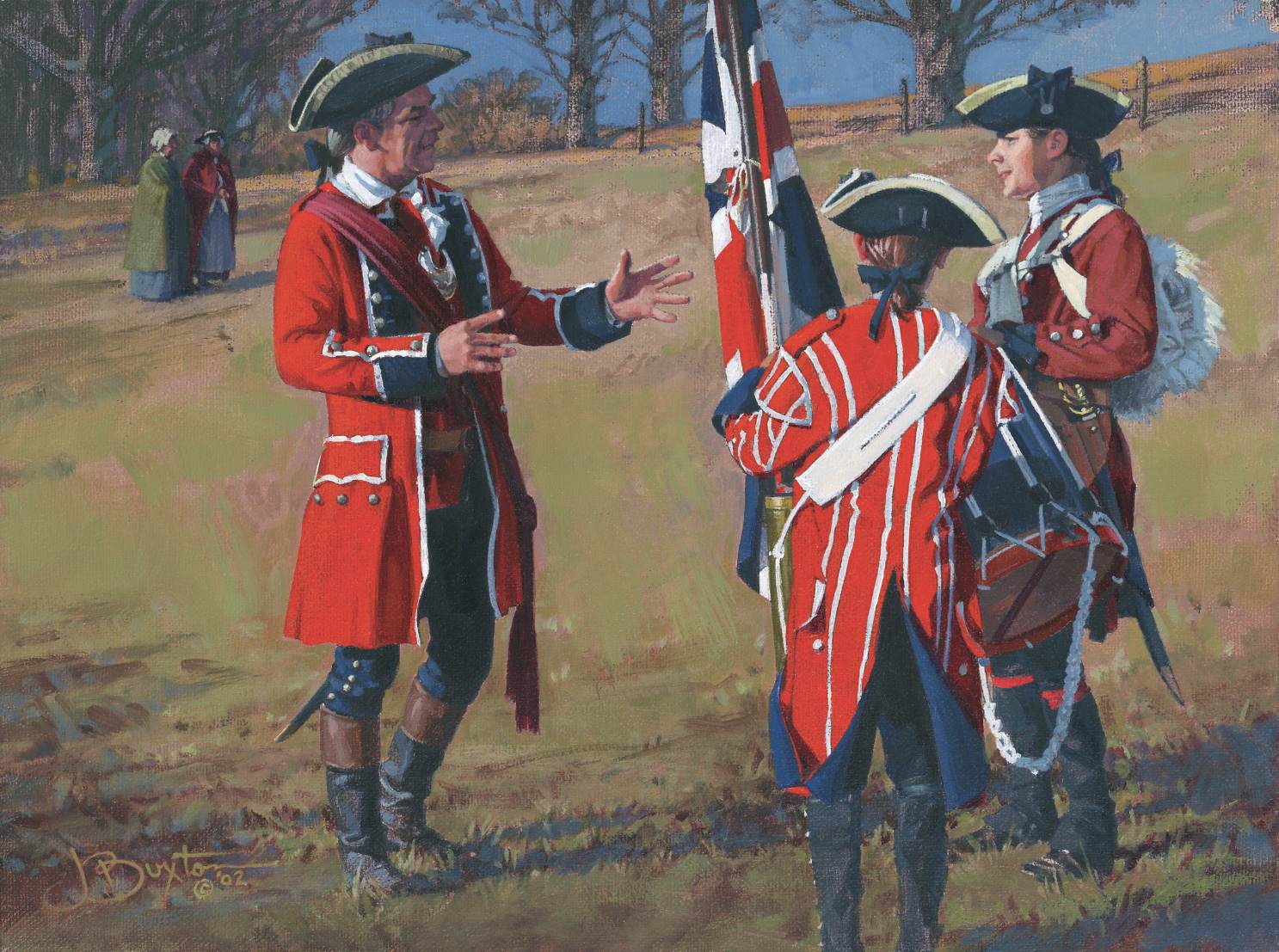Colonial Campaigns Club (CCC)

Recruit Welcome Pamphlet
Updated on
October 26, 2021

Fatherly Advice - by John Buxton
Welcome & glad you joined the Colonial Campaigns Club (CCC). The below is some helpful information for new recruits, especially those not familiar with the Early American War Series from John Tiller Software (JTS). It has been authored by our fellow member Nick Ferry (British Army), who has written it (with a little historical panache), to be a 'pamphlet style' guide of a few key aspects in the games for new recruits.
(This is the same information that is mailed to new recruits in PDF format, which can be found here too) - PDF Link Coming Soon

Sir,
Being a new officer you've no doubt sought out this Club because of its passion for history, and above all the love of a pulse-pounding JTS game! Wonderful beasts within the wargaming community, they are designed in such a way as to allow great player freedom, but above all exacting historical accuracy. Within that framework you will find that conducting your engagements with as much an eye to said accuracy as you can muster will see your efforts greatly rewarded. Because few arrive at our muster offices with this innate understanding, a pamphlet of institutional knowledge was conceived. So tie up your horse, help yourself to a drink or a smoke, and read on. Your men are waiting.
- Know your Objectives - Does your command need to exit the map for points? Capture a specific zone? The scenario description will usually relay this.
- Scroll the Parameter Data for the scenario - This document is found in the help menu, or by pressing F2. It will list effective weapon ranges, movement costs, command ranges, among other things.
- Examine the terrain - Don't become fixated on objective markers. Defeating the opposing army will allow the objectives to fall into your hands. Remember that skillful use of the terrain will always ensure victory.
- Know your force's command structure - You may activate "Division Colors" from the Display menu, or with a unit selected, choose the toolbar button "Highlight Unit Organization."
- Display your command ranges - Select an officer. Using the toolbar button or the "K" hotkey, see how far their command radius reaches. Your rule of thumb should be to keep all subordinate units within the highlighted area.
- Check unit facings - Once deployed in line, a company faces the spine of the hex they occupy. Their firing may be directed outward in a line following each hex adjacent to that spine.
- Maintain a cohesive front line - Gaps in your formation can and will be exploited by opposition. That being said, you may want to build in interval spacing between regiments or battalions in order to avoid a full runaway rout. When panic begins in a battle-fatigued line, it can spread like wildfire.
- Use higher echelon commanders to gather routed units for rallying - Proximity to their parent officers usually increases a unit's chances of reorganizing and returning to the fight.
- March in Column, fight in Line - The Column was devised as the most efficient method for traversing large tracts of land, even through rough terrain, in good order. March to the enemy and deploy into Line at a safe but close distance.
- Make use of Extended Line - The lessons of the Seven Years' War in North America were hard learned, and Extended Line formations were developed to account for irregular unit tactics. Usable by Native, Light, and Ranger units, it is formed by increasing the file distance between soldiers in Line. This formation is excellent for shooting and traversing terrain, and takes casualties slowly, but should not be expected to hold ground in the face of a determined melee assault.
- Be aware of your units' firing range and weapon equipage - Right clicking on your unit info panel will show your unit's primary weapon and its range:
- Musket: Range 500 feet (4 hexes)
- The primary firelock of any battlefield. Musket-armed units are equipped with bayonets unless otherwise noted. Units without bayonets should be kept out of melee unless absolutely necessary.
- Rifle: Range 1,000 feet (8 hexes)
- Maintained by units of Rangers, Frontiersmen, even Natives. Usually without bayonets, these units are ideal at harassing, screening, and causing general mayhem.
- Carbine: Range 375 feet (3 hexes)
- Most dragoon units are equipped with these lighter, cut-down patterns of infantry muskets. They do not have a socket for a bayonet. However cavalry melee power lies in the saber each trooper also has at their side.
- Artillery: Range varies.
- While scarce on North American battlefields, the correct use of artillery can dominate its area of the battlefield. Few formed troops stay in exposed positions long in the face of screaming balls of iron.
- Focus attacks on "DISRUPTED" units - A wavering company that is subject to repeat onslaught may find itself unable to maintain position, and will seek flight to the rear.
- Seek to "ENFILADE" opposing units - Direct enfilade fire on opposing units from outside their own facing arc. This sows confusion and can contribute to a rout.
- Avoid "Commando Style" tactics - This applies to both infantry and cavalry - Detaching a lone unit outside the purview of their commanding officer for purposes of harrying a supply wagon or securing an objective is not something that could have been implemented by an 18th century force, nor should it be utilized in Club battles. That said, raids overseen by the formation's commanding officer can and should be utilized to their full effect. Any type of unit can accomplish these deployments, but the most effective are Light Infantry, Rangers, Militia, and Native units - those culturally or doctrinally adapted to such use.
By now you are no doubt eager to set yourself to action. The above are guidelines, but it must be said: no planning can anticipate what you may find as you venture into the forests of this Continent. Friend and foe alike are arrayed across our forums and will gladly meet you. Please be sure to post challenges specifying game, scenario, and preferred optional rules, and see who comes out of the howling frontier to offer battle. As we also cater to general 18th Century military interest, please post whatever may be on your mind, or on the pages of history. We'd even like to peruse photos of your latest battlefield hike.
This author could go on, but the sun is nearly at its zenith, and the crackle of skirmish is building to a full roar. The army must be attended to. We eagerly await your presence on the field.
I have the honor to be most respectfully,
Sir,
Your most Obedient and most Humble Servant,
N.A. Ferry

Return to Main Club Page




![]()
